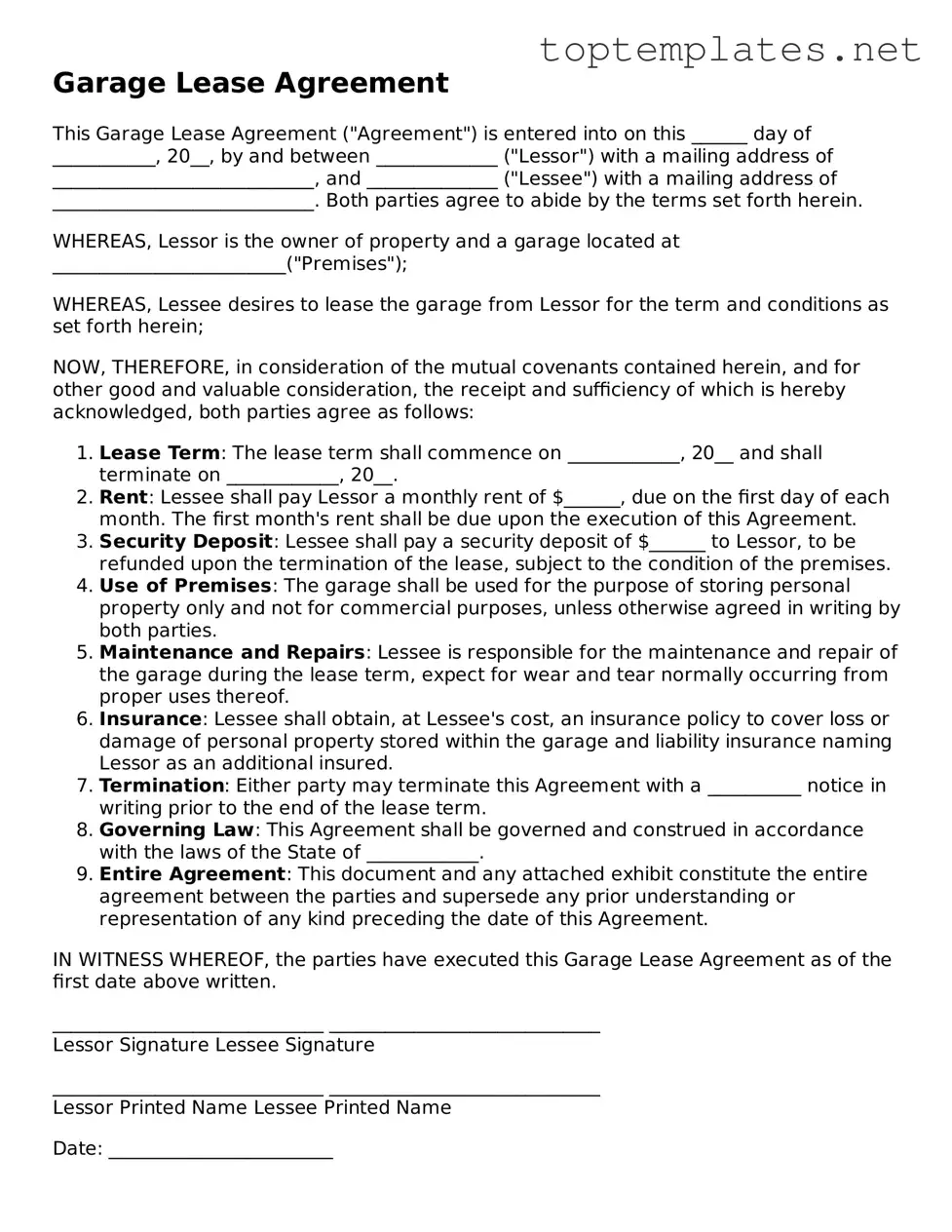What is a Garage Lease Agreement?
A Garage Lease Agreement is a legal document that outlines the terms and conditions under which a garage, or a portion of it, is rented out by the owner to a tenant. This form specifies the rental period, rental amount, security deposit information, and any conditions pertaining to the use of the garage.
Who needs to use a Garage Lease Agreement?
Owners of a garage space willing to rent it out and individuals or businesses looking to rent a garage space for storage, parking, or other uses should use a Garage Lease Agreement. It establishes a formal relationship between the landlord and the tenant, ensuring that both parties understand their rights and responsibilities.
What should be included in a Garage Lease Agreement?
A comprehensive Garage Lease Agreement should include the names and contact information of both the landlord and the tenant, a detailed description of the garage space being leased, the lease term, payment details including the amount and due dates, security deposit details, use restrictions, maintenance responsibilities, and conditions under which the agreement can be terminated.
Is a Garage Lease Agreement legally binding?
Yes, once signed by both the landlord and the tenant, a Garage Lease Agreement becomes a legally binding document. It obligates the tenant to pay the agreed-upon rent and adhere to other terms of the lease, while also obligating the landlord to provide access to the garage for the duration of the lease term.
Can I terminate a Garage Lease Agreement early?
Early termination of a Garage Lease Agreement is possible but is subject to the terms specified within the agreement. Typically, either party can terminate the agreement early provided they give written notice to the other party within a specific timeframe and possibly pay an early termination fee, as detailed in the agreement.
What happens if there is a dispute over the Garage Lease Agreement?
Should a dispute arise, the parties should first refer to the dispute resolution method outlined in the Garage Lease Agreement, such as mediation or arbitration. If the dispute cannot be resolved through these means, parties may need to resolve the issue through legal action, adhering to the laws of the jurisdiction in which the property is located.
How can I ensure my Garage Lease Agreement is enforceable?
To ensure its enforceability, the Garage Lease Agreement should be in writing, include all necessary details about the lease arrangement, be signed by both parties, and comply with local laws and regulations governing rental agreements. Consulting a legal professional to review the terms of the agreement can also help ensure its enforceability.
Do I need a witness or notary for a Garage Lease Agreement?
While not always required, having a witness or notarizing a Garage Lease Agreement can add an extra layer of legal protection and authenticity to the document. The requirements for witnesses or notarization can vary by jurisdiction, so it's advisable to check local laws.
Can I make changes to a Garage Lease Agreement after it’s been signed?
Changes to a Garage Lease Agreement after it has been signed can only be made with the written consent of both parties. Any modifications should be documented in writing, signed by both parties, and attached to the original agreement to ensure that the changes are legally binding.
